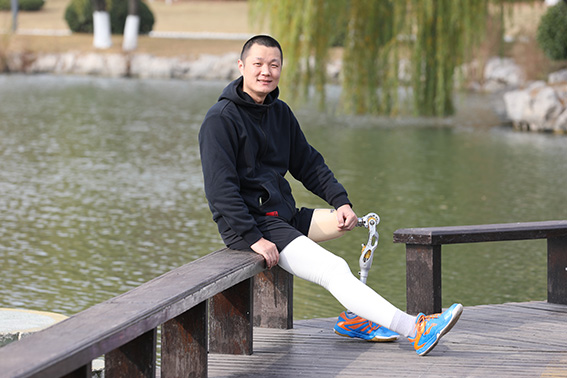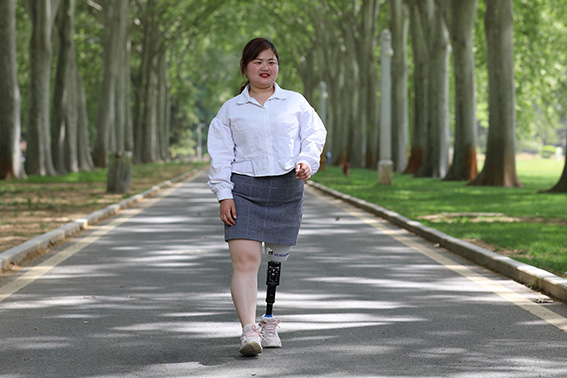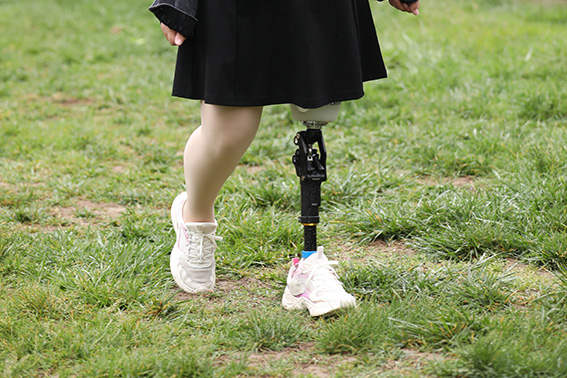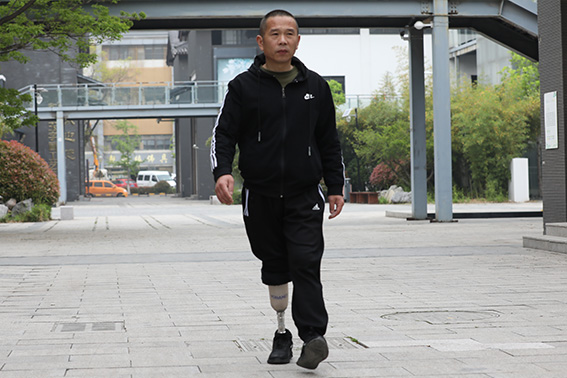News Center |
When amputees walk with lower-limb prosthetics, they are always concerned only with their gait. People only care if there is a problem with the stump when there are problems such as bruising, discoloration and lack of blood circulation in the stump. The various changes of the residual limb are inseparable from the prosthetic socket that accommodates the residual limb.

The socket is an important part of the prosthesis. It is in direct contact with the residual limb, supports the weight of the human body and controls the movement of the prosthetic limb. The comfort of wearing a prosthesis depends entirely on the fit of the socket. The prosthetic socket is an important structure that affects the wearing comfort and function of the prosthesis. Full contact and maximum stump load-bearing are the requirements of modern prosthetic fittings for sockets.

Weight bearing and movement are the most basic requirements for lower limb prostheses. The function of the prosthetic limb can be guaranteed only if the connection between the residual limb and the prosthetic socket is stable. The link between them is unstable and can hinder the precise control of the prosthesis by the amputee, thereby affecting the stability of standing and walking, and increasing the energy expenditure of the patient. Full contact between the residual limb and the socket helps to achieve the goal of a strong connection between the residual limb and the socket. Full contact requires at least the residual limb to be in contact and be able to withstand a certain amount of pressure. Otherwise, conservative or surgical methods should be considered to improve the quality of the residual limb before the prosthesis is installed.
Wearing an ideal stump load-bearing prosthesis, the amputee should be able to stand on the bottom of the socket with the stump as if he were standing on the ground before the amputation. Maximizing the weight-bearing of the stump is an important condition for the prosthesis to become physiological. The stump load bearing not only has important bio-mechanical significance, but also through the stump contact and load bearing, the sensory nervous system of the amputee can directly sense the pressure from the bottom and important information of the movement.
The stump load-bearing realizes the stump bone load-bearing. It has the effect of preventing decalcification (passive osteoporosis). For child amputees, it can also stimulate stump growth.

The weight-bearing capacity of the stump depends on the height of the amputation and the quality of the soft tissue, and on the surgical technique. Among BK amputees, the load-bearing capacity of the long stump stump is less than 20% of the body weight; the larger section of the medium-length stump can generally bear 30-60% of the body weight; the short stump has a higher load-bearing capacity, even up to 100%. The stump of AK also has about 20-30% of the weight bearing capacity. Various residual limbs obtained through joint dissection, amputation of the spongy bone near the joint, and foot amputation with part of the sole can fully bear the weight after a short period of practice, with 100% weight-bearing capacity.
The problem of full contact and stump load bearing of BK and AK prostheses is most prominent in lower extremity prosthetic fittings. BK and AK prostheses reduce the load on the stump by supporting the upper part of the stump, such as the proximal tibia, thigh, or ischium. The AK and BK amputation sites pass through the tubular bone, and the stump has limited load-bearing capacity. The prosthesis inevitably needs to reduce the load of the stump by bearing the weight on the upper part of the stump, but the degree of load relief should be reduced to a minimum, so that the stump can bear the maximum weight.

The weight-bearing capacity of the stump in the prosthesis also depends on the shape and material of the socket. Silicone BK and AK prosthesis technology provides material and technical conditions for full contact and stump load bearing. Nonetheless, many sockets that do not meet the full contact and stump load-bearing requirements can still be seen in today's BK and AK prosthetic assemblies.
The full contact prosthetic socket retains the advantages of the sorbent prosthetic socket and eliminates its adverse effects. The entire surface of the residual limb, especially the end of the residual limb, is in full contact with the socket. The end of the residual limb is subjected to axial pressure from the bottom of socket . During walking, the blood is sucked to the end of the stump by negative pressure when swinging the leg, and the bottom of the prosthetic socket compresses the stump to pump the blood out during the load-bearing support. The blood flows in and out alternately at the end of the stump, which promotes the blood circulation of the stump.

It is very simple to check whether the AK socket has achieved full contact and stump load bearing. Under the load-bearing support phrase, the amputee can judge not only by detecting the gap and pressure between the end of the residual limb and the bottom of the prosthetic socket through the air valve hole, but also by feeling whether the end of the residual limb is squeezed.
In order to achieve contact and load-bearing of the stump, on the one hand, the stump should be well covered with soft tissue, and on the other hand, the shape of the prosthetic socket should be very suitable for the stump. This puts forward higher requirements for both amputation technology and prosthesis assembly technology.
In China, the assembly of lower limb prostheses has not been able to achieve full contact and stump load-bearing. There are both cognitive reasons, technical reasons for prosthetic assembly, and technical reasons for amputation.
Many amputees and prosthetics technicians don't pay enough attention to this problem. They fail to recognize that full contact and stump weight bearing can affect the health of the amputee's stump and even the entire body. In order to avoid the trouble of prosthesis fitting caused by tenderness at the end of the stump, the prosthetic fitting technicians stand in their own position rather than the position of the amputee, and simply hang the stump in the prosthetic socket, rather than pursue full contact and stump Weight-bearing target. The amputee accepted it readily because there was no tenderness.
Copyright © 2015 USA-YOBAND. All Rights Reserved 沪ICP备09003269号